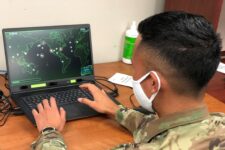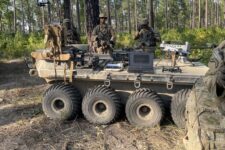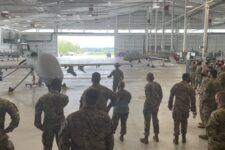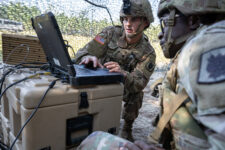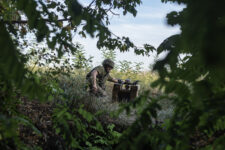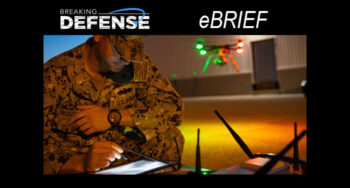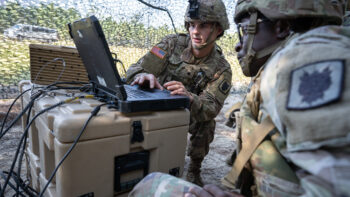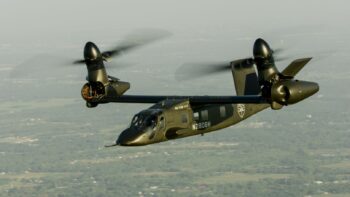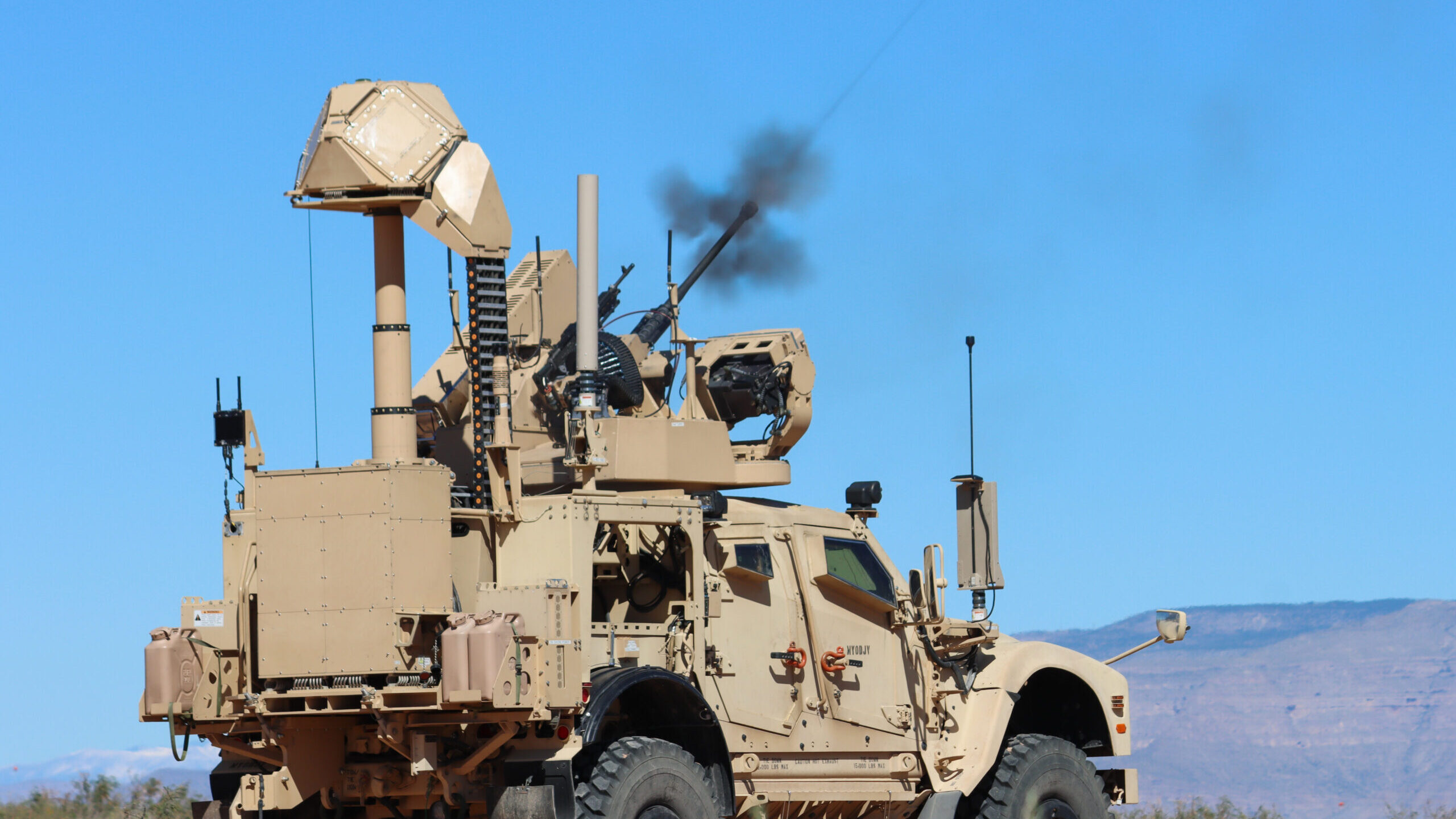
A Mobile Low, Slow, Small Unmanned Aerial Vehicle Integrated Defense System assigned to the 37th Infantry Brigade Combat Team engages an aerial target during a training exercise near Fort Bliss, Texas, Oct. 24, 2022. (US Army National Guard/Spc. Everett Sharp)
SMD 2024 — The US Army is eyeing four counter drone-related competitions next year, including one to select a next-generation missile, according to Brig. Gen. Frank Lozano, the Army’s program executive officer for missiles and space.
Lozano, expected to receive his second star today, spoke at the Space and Missile Defense symposium in Huntsville, Ala. on Tuesday, providing the audience with a laundry list of upcoming competitions to gear up for. If lawmakers greenlight the service’s budget request and efforts stay on track, he is anticipating four opportunities in 2025.
One top race expected to grab attention is a next-generation counter-unmanned aerial system (C-UAS) missile. The service is currently working with Raytheon’s Coyote and BlueHalo’s Freedom Eagle (FE-1) missiles but preparing to open up the field.
“There are other companies out there that are working on interceptors for a counter-UAS application that might actually also have growth of potential to intercept … large caliber rockets, as well as potentially cruise missiles,” Lozano said
“So, we’re going to be holding a competition next year to look at a next generation counter-UAS missile,” he added.
Also on the agenda for 2025 is hosting a competition to find a handheld C-UAS system for soldiers in combat. Power limitations are typically a challenge for systems this size and it simply isn’t feasible for soldiers on the battlefield to tote along a 500-kilowatt generator, Lozano said.
However, the 101st Airborne Division has been testing out new handheld systems, he added, and that feedback has been positive enough for the service to launch a competition next year.
When it comes to C-UAS tech, Lozano and his team are also preparing to compete a Forward Area Air Defense (FAAD) command and control replacement. Dubbed the Integrated Battle Command System (IBCS) maneuver, the Army is looking for a mobile system to first connect with C-UAS capabilities before also adding in maneuver short-range air defense ones.
“The intent will be to start off with something easily digestible, easily achievable, that many in industry can compete and participate in with the hopes of winning an award,” Lozano said.
The fourth and final C-UAS competition slated to kick off next year, he said, is finding a flat panel array radar for the new single vehicle Mobile-Low, Slow, Small-Unmanned Aircraft Integrated Defeat System (MLIDS). The Army had been using a two-mine-resistant ambush-protected (MRAP) all-terrain vehicle (M-ATV) configuration that includes a “very capable” Raytheon radar. However, the service, Lozano said, is transitioning that setup to a single Stryker vehicle, and it wants to explore other radar options from companies like Elbit and SRC.
“[We’re setting] up a competition where we can bring out all the vendors and have a competition to make sure we understand what the state of play is within the market space, and give everybody an opportunity,” he added.
CORRECTION 8/8/2024 at 12:05 p.m. ET. The original story stated that the Army would seek a competing a Terminal High Altitude Area Defense System (THAAD) command and control replacement. The story has been updated to reflect that it is instead seeking a Forward Area Air Defense (FAAD) replacement.

